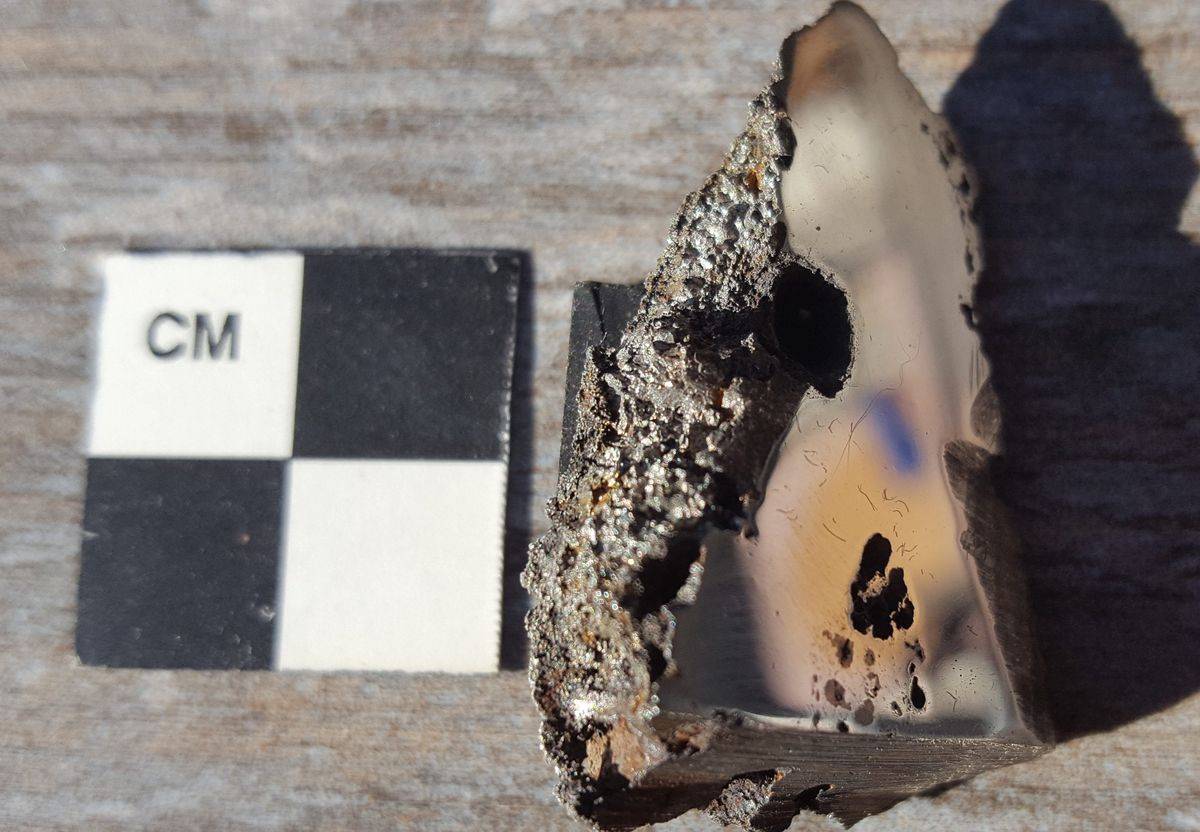A team of researchers has discovered at least two new minerals that have never before been seen on Earth in a 15-ton meteorite found in Somalia — the ninth largest meteorite ever found.
Scientists at the University of Alberta have identified two new minerals in a slice of a meteorite weighing 70 grams, which was discovered in Somalia in 2020.
The minerals came from a 70-gram (nearly 2.5-ounce) slice of the meteorite that was discovered in Somalia in 2020 and is the ninth-largest meteorite ever found, according to a news release from the University of Alberta.
The minerals were found while examining the meteorite, and are believed to be the result of unique geological conditions.
While examining a sample of space rock, Chris Herd, curator of the University of Alberta’s meteorite collection, noticed something unusual.
Some parts of the sample were not identifiable through a microscope, leading him to seek advice from Andrew Locock, head of the university’s Electron Microprobe Laboratory.
After analyzing the sample, Locock determined that there were at least two new minerals present.
According to Herd, a professor in the university’s department of Earth and atmospheric sciences, this was a rare and exciting discovery, as it usually takes much more work to confirm the existence of a new mineral.
One of the minerals, Elaliite, was named after the meteorite itself, which is called the “El Ali” meteorite due to its location near the town of El Ali in Somalia.
The other mineral, Elkinstantonite, was named after Lindy Elkins-Tanton, a scientist at Arizona State University’s School of Earth and Space Exploration.
The discovery of these new minerals was made possible in part due to the existence of similar, synthetically created minerals, which allowed researchers to compare the composition of the newly discovered minerals to their human-made counterparts.
The discovery of these two new minerals in a meteorite is a significant find that adds to our understanding of the chemical conditions that can exist in space.
It also highlights the importance of studying meteorites, as they can provide valuable insights into the origins and evolution of our solar system.
The fact that the minerals were found in a slice of the meteorite, rather than the entire rock, suggests that they may have formed under specific conditions within the meteorite itself.
This could mean that the meteorite has a complex history and may have experienced various types of environments and conditions during its journey through space.
The names chosen for the two minerals, Elaliite and Elkinstantonite, also reflect the importance of the scientists who discovered them.
The naming of new minerals is a process that requires approval from the International Mineralogical Association, and the approval of these two minerals in November of this year indicates the robustness of the work.
The discovery of these two new minerals in a meteorite is an exciting discovery that adds to our knowledge of the diversity of minerals that can exist in space and the unique geological conditions that can lead to their formation.
It is a testament to the continued scientific curiosity and exploration of our universe and the important role that meteorites play in advancing our knowledge.



